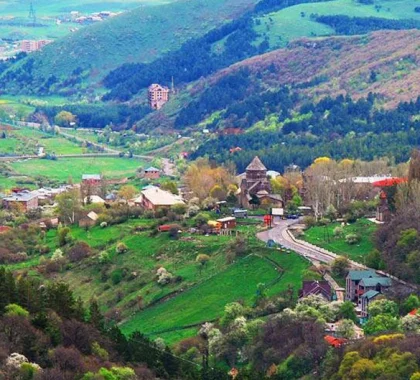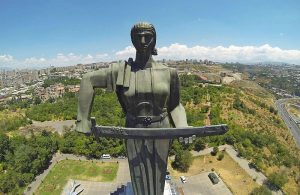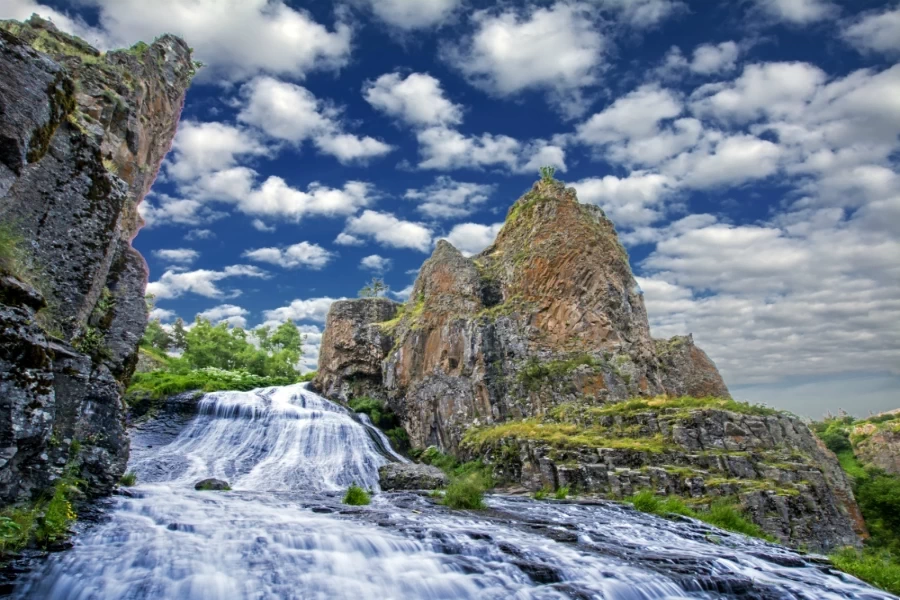Tsaghkadzor is a resort town and urban municipality located in the Kotayk Province of Armenia. It is a popular destination for skiing and health tourism and one of the most important tourist attractions in Armenia. The town is situated on the eastern slope of Mount Teghenis, 5 kilometers northwest of the provincial capital Hrazdan and 58 kilometers northeast of the capital Yerevan.
History:
In ancient times, Tsaghkadzor was a summer residence for the Arsacid kings of Armenia. It became a prominent religious center following the establishment of the Kecharis Monastery in 1033, which remains standing to this day. Under Soviet rule, Tsaghkadzor was developed into a major resort.
Name Origin and Historical Background:
The name Tsaghkadzor literally means “Valley of Flowers” in Armenian, derived from the nearby Tsaghkunyats Mountains.
In ancient times, the Tsaghkadzor area was part of the Varazhnunik canton in the Ayrarat province of Greater Armenia. In the 3rd century, Tsaghkunyats Dzor became a favored hunting ground for the Arsacid kings. During the 4th and 5th centuries, the area was governed by the noble Varazhnuni family under the Arsacid monarchy. During the Sassanian period (5th to 7th centuries), it was ruled by the Kamsarakan and Amatuni families.
In the 9th century, Tsaghkunyats Dzor became part of the Bagratid Kingdom of Armenia. By the 10th century, the noble families of Kamsarakan and Pahlavuni, linked to the Arsacid dynasty, ruled the cantons of Aragatsotn, Kotayk, and Varazhnunik. In 1033, Prince Grigor Magistros Pahlavuni of the Pahlavuni family built the Kecharis Monastery.
In the early 16th century, Kecharis became part of the Erivan Province under Safavid Persia. In the 18th century, Darachichak (Tsaghkadzor) was part of the Erivan Khanate under Afsharid and later Qajar rule. On October 8, 1827, a powerful earthquake near Tsaghkadzor destroyed churches in the settlement. After the Russo-Persian War (1826-1828), Eastern Armenia, including Tsaghkadzor, became part of the Russian Empire.
After the fall of the Russian Empire and the Armenian victories in the Battles of Sardarabad, Aparan, and Karakilisa, the Kotayk region became part of independent Armenia in May 1918. Post-independence, Tsaghkadzor entered a new era of development starting in 2000, with the establishment of numerous luxury hotels and health resorts.
Geography:
Tsaghkadzor is located on the southeastern slope of Mount Teghenis, at an altitude of 1,841 meters above sea level. It is surrounded by the Tsaghkunyats Mountains to the west and the city of Hrazdan to the east.
Culture:
The Kecharis Monastery is one of the most significant religious complexes in eastern Armenia, founded in the early 11th century. The complex includes four separate churches, with the Church of St. Gregory built in 1033 being among them.
Tsaghkadzor is renowned for its ski resort, situated above the town at an elevation of 1,750 meters above sea level. The resort was fully modernized during the first decade of the 21st century, making it a major attraction for winter sports enthusiasts.
Conclusion:
Tsaghkadzor, with its rich history, cultural heritage, and modern amenities, continues to be a prime destination for tourists seeking both relaxation and adventure in Armenia. Its stunning natural beauty and well-developed infrastructure make it a must-visit location.

























